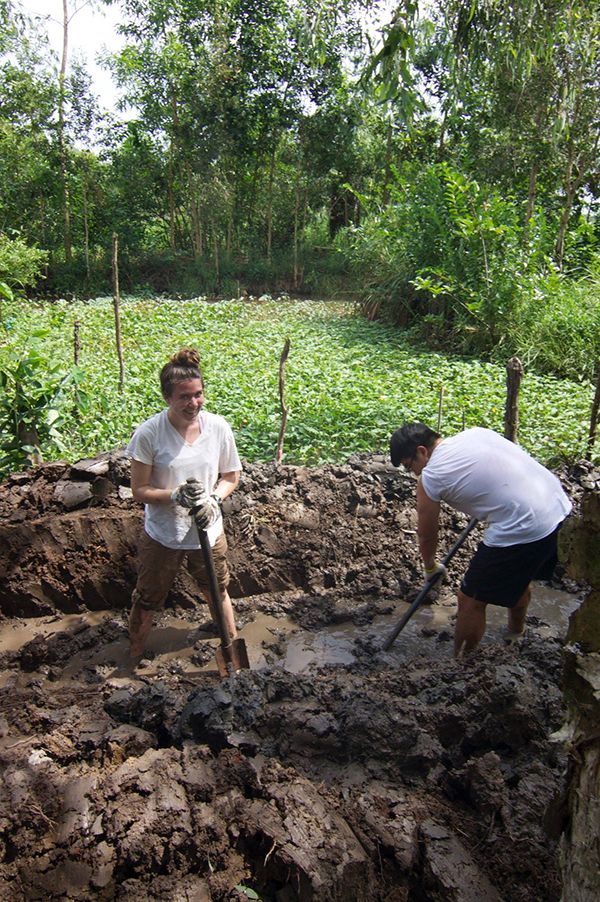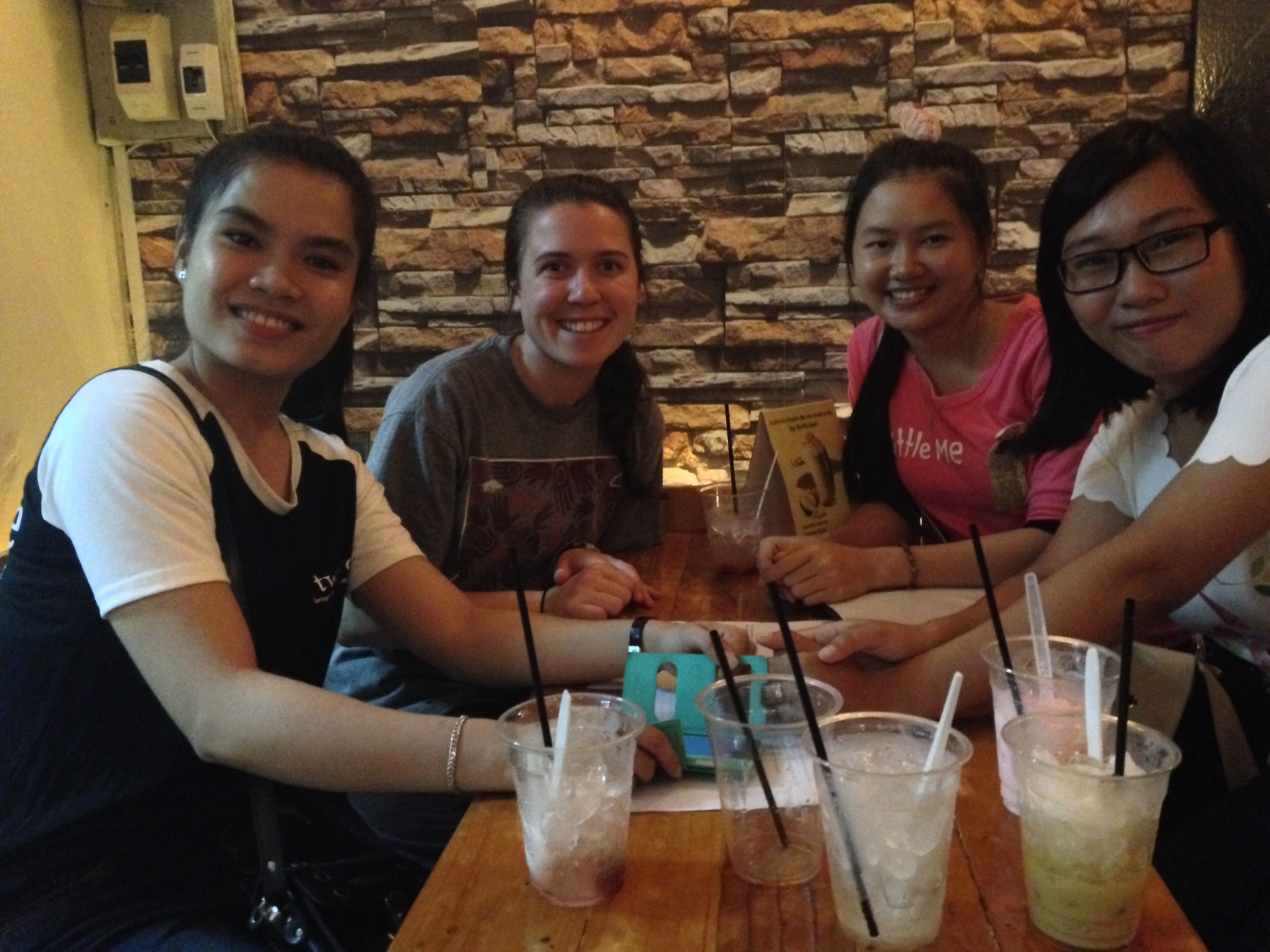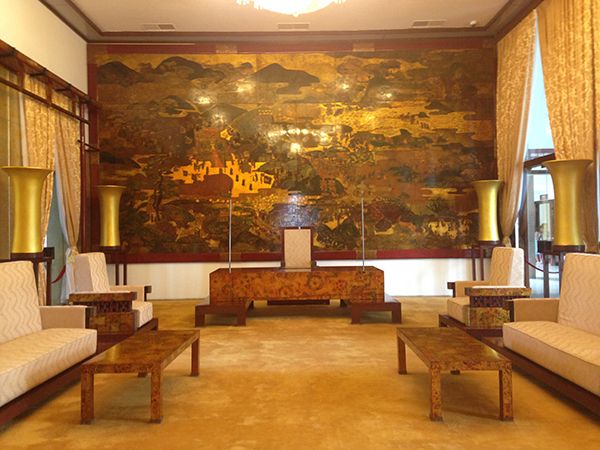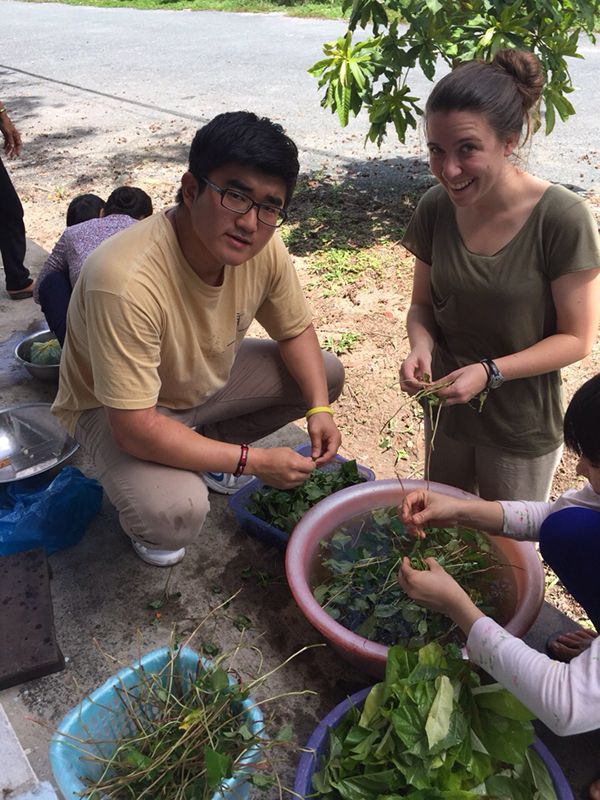Honors physics student Colleen Kretzer was one of the first students to participate in the new Global Community Development in Vietnam program. There, she helped to install two biogas systems that provide cheap, renewable fuel for families, and learned to love the lotus plant (flower, pod, seeds, stem, and root). Colleen learned first-hand about the resourcefulness of the Vietnamese, and will take home some great lessons in hands-on learning when she becomes a teacher.
I participated in the UofA Faculty-Led Community Development Program, and because this program was in its first year, it was a very exciting project to be a part of and help establish for many students and many years to come. My time in Vietnam provided a unique academic experience unlike any other I have ever had. Every day was truly full of learning from the time you got up to the time you went to bed. It was integrated throughout the day in every meeting with community members, in the conversations at our meals, in our tours of factories, in our boat rides through the canals and rivers, and in our accompanying readings. To be taking something in every moment of the day often felt like a lot to process—it was challenging—but I have never felt that my learning was more valuable.
Hands-On Learning
The things I read in the literature (Vietnamese Poetry and Literature by Vietnamese and Vietnamese-American authors) came alive as I actively went through the day. We also spent time reading literature about development theory so that we would have a better idea of what comprises a community development project. The active learning environment that I experienced every day was so natural and was fostered so well by my professors. As a soon-to-be teacher myself, while it is probably unrealistic to think that I could make every day a “Vietnam Learning Environment,” I see the importance of providing ways for students to engage in a variety of ways in their own learning, creating opportunities for students to reflect on their understanding and attempt to make it relevant for students. What a unique learning adventure that I wish everyone could enjoy!
Building Trust
Development work takes patience. It is about building trust and building relationships. It is about sharing ideas and coming with attitude of reciprocity instead of superiority. It is slow. It was the moments of meetings (which we did a lot of), listening to lectures, or conversations with Vietnamese students or professors at the dinner table that I enjoyed the most because so much of what I was seeing began to make sense as I learned from others.
Recycling Everything
In Hoa An, the rural community where we were working, one of the sustainable projects that we did was install two bio gas systems (systems that process pig waste into useable gas) with two families. Basically, these systems were an inexpensive and renewable way to provide gas that the family could cook with. I really like the fact that before installing the system the family was required to have an investment in pigs. Because the family had money invested in the pigs, they would continue to raise them and sell them and so on, which was a very positive source of income for these families. Now the biogas system was an added benefit. Gas for one year pays for the system. There is a large benefit to these systems but the challenge is getting the community government’s support because sometimes the idea is that since a stove can be heated by cutting down and burning wood, that’s what should always be done.
Cultural Encounters
There was so much rich culture to take in on this trip. The Vietnamese culture is purposeful, structured, and resourceful. Being able to see all the intricate details of the society was very engaging. As you walked around, ate, toured building, and had meetings all of these things were revealed. There were two specific instances that I enjoyed the most. First, we visited the Reunification Palace which is where the South Vietnamese Diplomats conducted their business during the War. Not only was this building beautiful but each room, the architecture and the colors and the choice of furniture was specifically chose to represent the desired feelings and attitudes. For example, the President’s meeting room has the President’s chair on a platform, but all of the other delegates chair were on a lower level. This revealed a lot about the levels of authority and power. In contrast, in the Ambassador’s room, all of the seats were on platforms of the same level and the room carried a much different attitude.
Resourcefulness. This is a culture that uses everything, especially when they eat which provided for some interesting meals. One of the greatest things about not being able to speak Vietnamese is that I always find myself in interesting situations trying to figure out what someone is telling me through hand motions and body language. This time I was being taught how to wash vegetables. At this point I had realized that by vegetables, that really just means leaves. I inquired about the source of these vegetable and sure enough the answer was “in that forest over there.” My favorite thing to eat everything of was the Lotus plant—the flower the pod, the seeds, the stem, the root. It was all so delicious. Eating all of some other things was not so great…
My first bite of Auntie Anne’s back in the Chicago Airport never tasted so good. My time in Vietnam was quite an experience. One I would never trade. One I never truly could have expected. One I will never forget.




